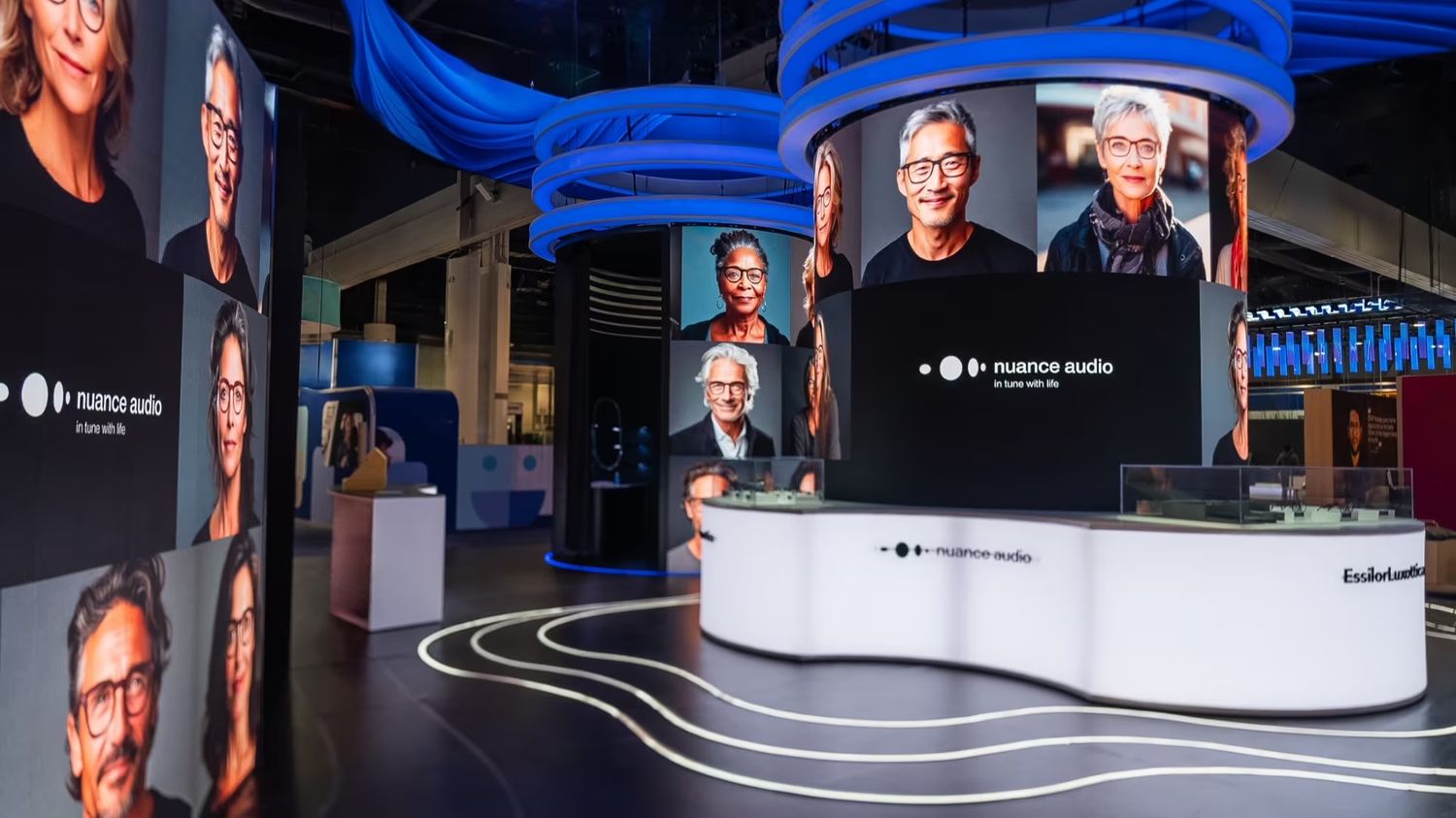Finding the ability to speak when you only have a trickle of voice left; hear again, be able to participate in a conversation without showing that you have lost part of your hearing abilities: when technology and artificial intelligence put themselves at the service of quality of life.
Published
Reading time: 2 min

In appearance, they are simple glasses. Glasses signed “nuance audio” – the new brand from the Franco-Italian global giant EssilorLuxotttica – weighing barely 40 grams, neither heavier nor bigger than ordinary glasses. A frame, lenses, no visible electronics, no wires, no visible earpiece, nothing in the ear.
And yet, these are the first glasses in the world to integrate a hearing aid. The target: mild to intermediate deficiencies, i.e. one billion and two million people affected throughout the world, with the same concern: discretion, if not total invisibility of the hearing aid.
The secret: very small speakers, hidden in the branches, ultra-directional, which send the improved sound into the ears in a fraction of a second, so as not to create unpleasant delay, while being imperceptible, inaudible by your neighbors .
Four times cheaper than a traditional hearing aid
The mount houses several microphones that pick up either the voice of the person you’re looking at or those around you, like in a car. The on-board technology then takes care of eliminating the hubbub and making the voice of your interlocutor understandable. Launch planned for 2025 in Europe, at a quarter of the price of a traditional hearing aid.
Computing power and artificial intelligence are also used to give back their voice to those who lose it. At the beginning of January, I found the demonstration, at CES in Las Vegas, very impressive on the Whispp stand, a smartphone application starting at €20 per month.
Concretely, I find myself on the phone with an almost voiceless man, who only has a trickle of voice left. This voice stream will be captured, amplified, then recreated by artificial intelligence, and if there are recordings, with my correspondent’s own voice.
Being heard with your pre-cancer voice
This is the case of Ruud, this Dutchman, three years after his throat cancer. This is also the case for Sandra, who suffers from spasmodic dysphonia, in other words intermittent spasms of the vocal cords. His tiny voice, captured, amplified, is recreated by the app. The resulting voice – which does not rely on any recording of his healthy voice – is reminiscent of a robot but at least it is completely understandable.
Other examples of use: in a TGV or in a waiting room, Whispp allows you to make a phone call discreetly, by deliberately whispering into your phone, and therefore without disturbing your neighbors, while being perfectly understandable to the user. other end of the line.
